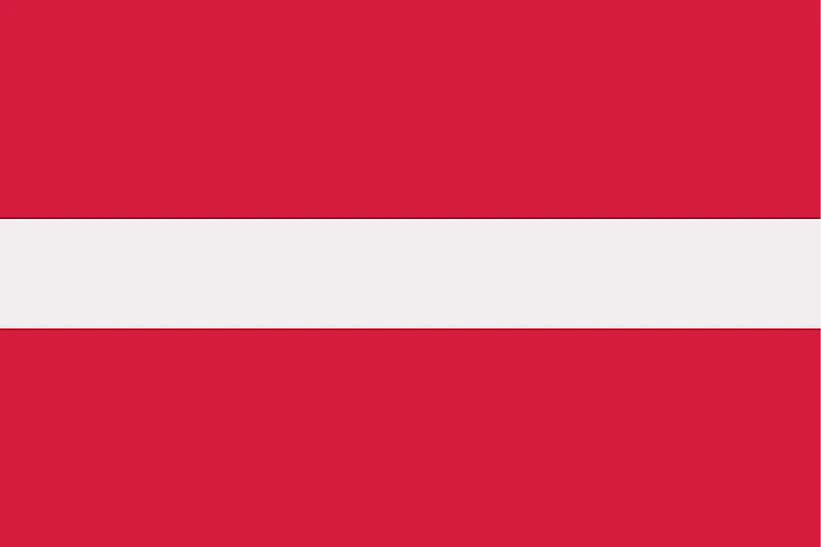
ラトビア
| 大陸 | ヨーロッパ |
| 資本金 | リガ |
| 人口 | 1,965,686 |
| GDP | $50.65 億ドル |
| 一人当たりGDP | $25,700 |
| ダイヤルコード | +371 |
| ISOコード(2文字) | LV |
| ISOコード(3文字) | LVA |
ラトビア 風景






ラトビアについて
古代バルト海の伝統と現代ヨーロッパの革新が出会う国、ラトビアへようこそ。人口約190万人、面積64,589平方キロメートルのラトビアは、傑出した文化遺産と手つかずの自然が融合し、北欧と東欧の架け橋となっています。
地理的特徴と自然の美しさ
ラトビアの地理は、白砂のビーチが広がるバルト海の海岸線から、国土の半分近くを占める広大な森林まで、多様な景観を含んでいる。地形は平坦なところが多く、最も標高の高いGaiziņkalnsの標高はわずか312メートルである。
12,000を超える河川、3,000の小さな湖、広大な湿地帯がある。古代のガウジャ渓谷の春の洪水から広大な森林の秋の紅葉まで、四季折々の自然景観が楽しめる。
保護地域には、ラトビア最大かつ最古の国立公園であるガウヤ国立公園や、古代のバルト海の海岸線を保護するユニークなスリーテレ国立公園などがある。ラトビアは環境保護に力を入れており、その結果、ヨーロッパで最も澄んだ空気と手つかずの自然環境が保たれている。
文化遺産と伝統
ラトビアの文化は民俗伝統に深く根ざしており、特に120万以上のテキストが収集されている古代の民謡「ダイナス」が有名である。ラトビアの遺産には独特の合唱の伝統もあり、ユネスコの無形文化遺産に登録されている。
伝統的な芸術には、複雑な織物、特に古代の象徴的な模様が描かれたリエルヴァルデのベルト、洗練された金属細工などがある。5年に一度開催される「歌と踊りの祭典」では、世界最大級の合唱イベントに数千人の演奏家が集う。
ラトビア料理には、グレイピースベーコン添え、黒っぽいライ麦パン、ベリー類やキノコなど様々な森の産物といった伝統料理がある。夏至を祝うJāņiは今でも最も重要な文化行事の一つである。
歴史の旅
ラトビアの歴史は、古代のバルト民族から様々な外国統治時代を経て、現代の独立に至る。ラトビアはその戦略的な立地から、歴史を通じてさまざまな文化や勢力の交差点となってきた。
中世リヴォニア時代、スウェーデンの支配、ロシア帝国の支配、1918年の最初の独立、ソビエト連邦の占領、1991年の独立回復などがその主な例である。ラトビアは欧州連合(EU)と北大西洋条約機構(NATO)への統合に成功し、西側諸国共同体への復帰を果たした。
現代の経済状況
今日のラトビア経済は、輸送と農業という伝統的な強みと、IT、グリーン・テクノロジー、クリエイティブ産業といった成長分野を兼ね備えている。ラトビアは新興企業やデジタル・イノベーションの地域的拠点となっている。
最近の取り組みでは、デジタルトランスフォーメーション、持続可能な開発、スマートテクノロジーにおけるイノベーションに焦点が当てられている。ラトビアの戦略的立地と整備されたインフラは、バルト三国の重要なビジネスセンターとしての地位を支えている。
国際関係とグローバルポジション
ラトビアは欧州連合(EU)と北大西洋条約機構(NATO)に積極的に参加し、西ヨーロッパとバルト地域の架け橋としての役割を果たしている。サイバーセキュリティとデジタル・ガバナンスにおけるラトビアの専門知識は、国際協力に貢献している。
ご存知でしたか?
- ラトビアのインターネット速度は世界最速?
- 欧州で上級管理職に占める女性の割合が最も高い国は?
- 首都リガには、世界最大のアール・ヌーヴォー建築コレクションがある。
- ラトビアの国旗は世界で最も古いもののひとつで、13世紀にさかのぼる?
結論
ラトビアは、自然遺産と現代的な革新が融合したユニークな国です。古くからの民俗的伝統からデジタル技術の成果まで、手つかずの森から活気あふれる都市まで、ラトビアは独自の文化的アイデンティティを守りながら進化を続けています。人口動態の変化や経済発展などの課題に取り組む中、ラトビアはバルト海のユニークな遺産を維持しつつ、持続可能な成長に取り組んでいます。